A Walk Between Today and Tomorrow
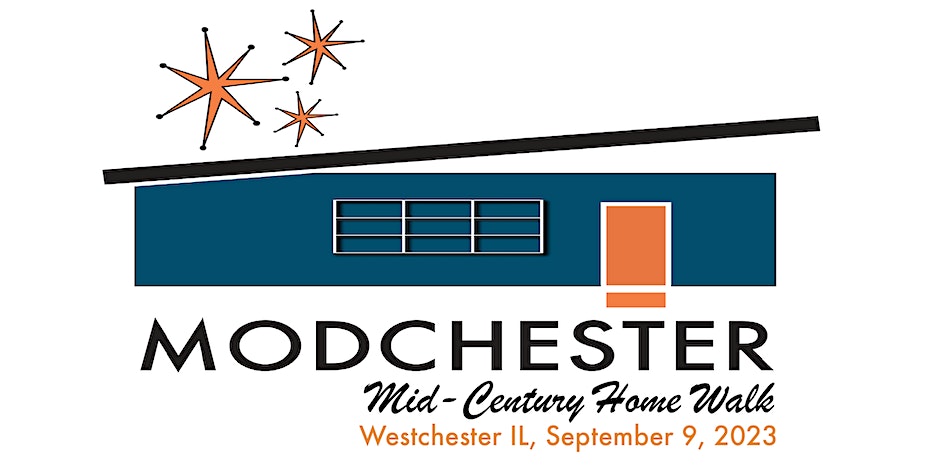
Design by Janet Hill.
The future is the foundation of finding every right house.
People bring visions and dreams into a new landscape. Midcentury Modern, or Post WW II architecture came along at the right time. Midcentury ranch homes emerged in 1949, four years after the end of World War II. Americans were looking towards a different tomorrow, one with a more approachable ceiling. The affordability of automobiles led to the growth of suburbs. People downsized from colonial homes to ranch houses with ample windows and open space. Midcentury architecture became clean and linear.
Westchester, IL. is a wonderland of midcentury homes.
Westchester ranch homes are not the “Atomic Ranch” vernacular of Palm Springs Ca. but they represent a period of warm and accessible Midwest architecture that is frozen in time.
We call it “Modchester”
Instead of complaining about stuff around me all the time, about a year ago I decided to try and make my community a better place.
In December 2017 I bought a 1952 home in Westchester about 14 miles west of Chicago. That is a backstory about my family here.
I’ve since learned that first-time visitors to Westchester are amazed by the secret architectural enclave of all the well-preserved midcentury homes in our community. Westchester could spin the midcentury ranch the same way neighboring Berwyn did with bungalows.
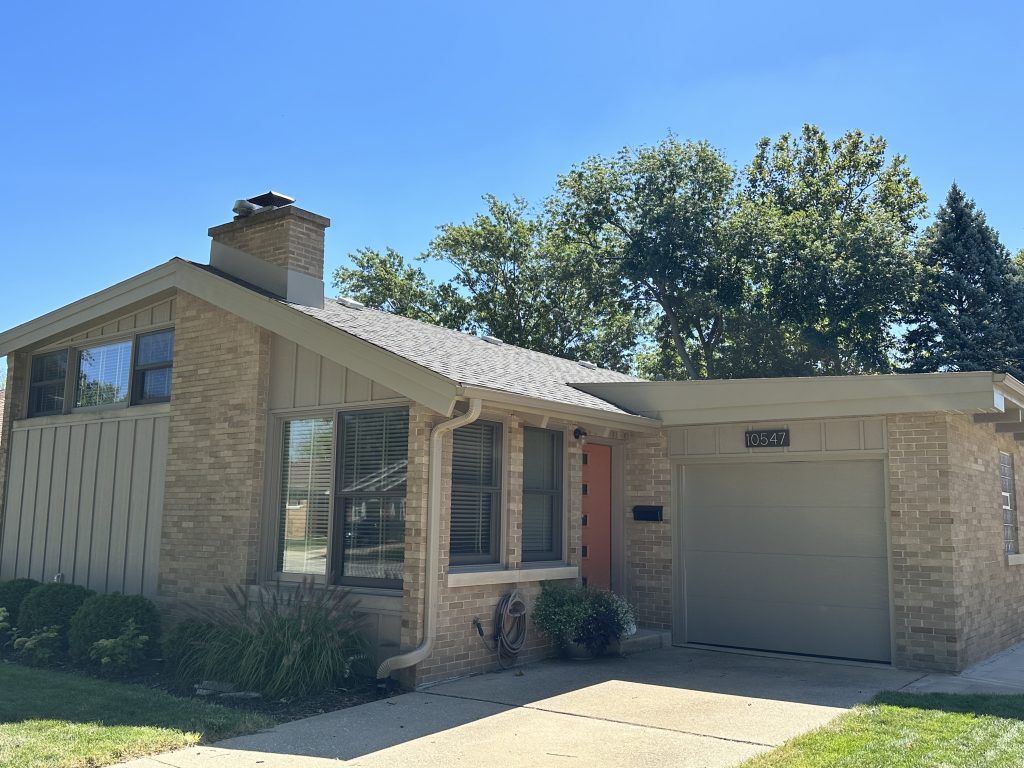
Come to our free tour to find out where these gems are.
So for the last several months, the volunteer Westchester Citizens Advisory Board (CAB) on which I serve has been assembling a “Modchester” house walk. The free, guided tours of about 20 midcentury homes take place Sept. 9, with the rain date Sept. 16.
Here’s the registration information. There will be vintage cars along the route and a free 4 p.m. reception with mid-century appetizers like pineapple upside-down cake, dill pickles in ham and cream cheese, cocktail meatballs, Modchester Punch and DJ Karebear, all at the Westchester Community Church. We have a 6 p.m. curfew.
With little publicity, the Modchester response has been overwhelming. We have nearly 200 reservations and we will cap registrations 12 hours before the event. Why did this connect with people?
Modernism is optimism. It is not excessive. Midcentury architecture celebrates the human scale. People are reassessing these values, especially after the pandemic.
The new look of midcentury modern homes also influenced midcentury modern design. High-quality furniture became affordable and scaled for smaller homes and even apartments.
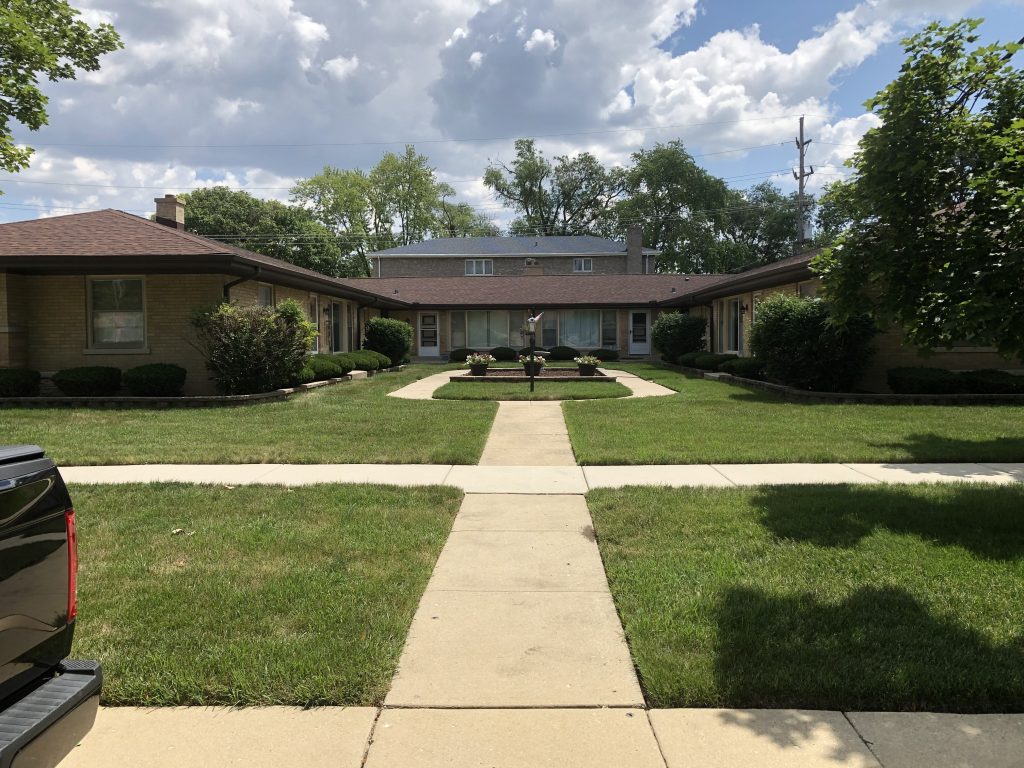
Westchester apartment building, 2023.
“Midcentury modern designers were trying to get back to the core of what an object is and what it is supposed to do,” said Katherine White, curator of design at the Henry Ford Museum of American Innovation near Detroit in a June 2023 interview with the Washington Post. “Designers made foundational changes to what furniture could be.”
There is a whole lot of core to work with in Westchester. A Jan. 23, 1949 article in the Chicago Sunday Tribune featured the headline: “DREAM TOWN GAINING GOAL SET IN 1920s (Homes Rising in Westchester).”
Reporter Ray Ellis wrote, “Born in 1925, the village was hailed as the first Chicago area planned community and it was predicted it would house 40,000 persons. In 1940 the village had a population of 621 living in some 150 buildings…..Today the village has a population of more than 3,000 living in 877 buildings and more than 100 other single-family living units are under construction.”
Ranking high on the reasons for growth was the “natural resources” of Westchester. In 1949 that included 41 miles of mains carrying water from Lake Michigan, 40 miles of sidewalks, 20 miles of paved streets, a complete street lighting system, proximity to bus, (Chicago) elevated and railroad transportation, nearness to a large forest preserve (Westchester Woods still off of 22nd Street) and 15,000 elm trees which grew from tiny saplings to maturity. The 80-acre Wolf Road Prairie has always attracted more than two dozen species of birds due to its wetland habitats.
When I was a high-flying nightlife guy in Chicago I never dreamed I’d spend so much time in my backyard watching birds.
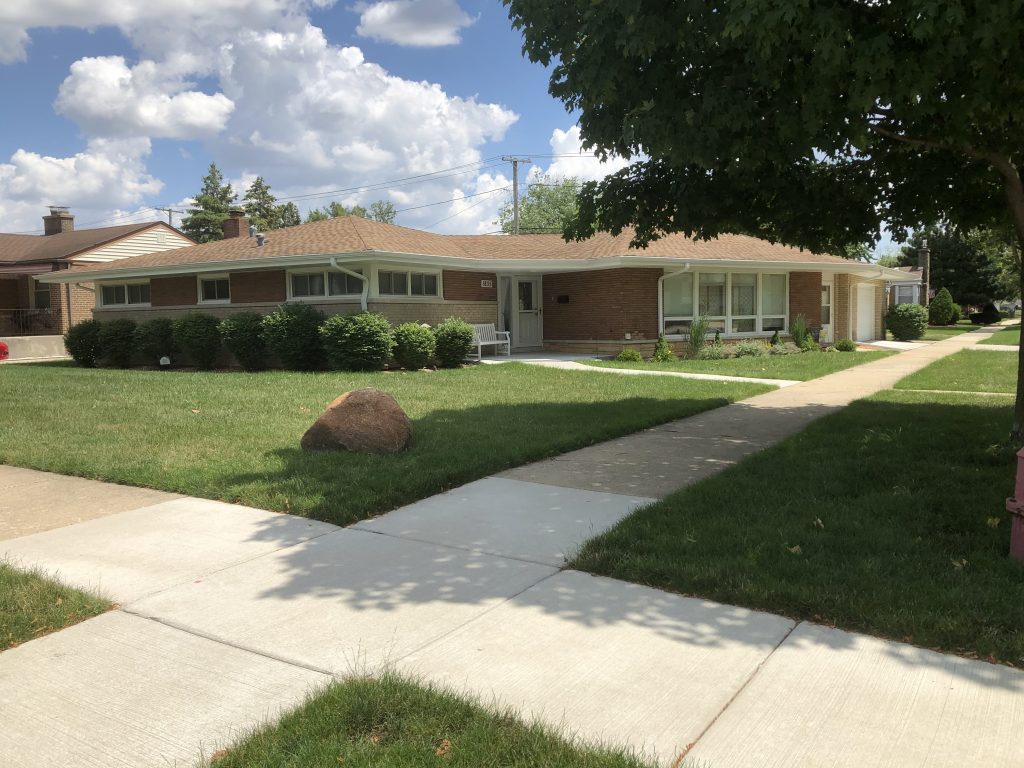
The woman who lives in this house told us her family bought it because it reminded them of the Miami Beach house of the “Golden Girls” television show.
The woodsy environment of Westchester presented great potential for Chicago area developers. The midcentury-style leaned into nature with low windows, sliding glass doors and multiple access points. The best-known name in Modchester is builder and developer Walter Baltis (1904-1986).
A “Baltis ranch home” has brick exteriors, spacious rooms, plastered walls, ample storage with nooks and crannies, wood trim, full basement. Plaster walls kept homes cool during the summer. Lots of windows enhanced the airflow. Baltis fought for plaster walls.
Baltis also built almost 40 four-flats throughout Westchester. The village has an ordinance that homes must be built in brick. The homes that are currently not brick were built before the ordinance was established.
Since I have lived here I’ve been surprised at the high number of people I’ve met who left Westchester and returned. I stumbled into my parent’s old home by mistake. But I could not walk away.
The late Kentucky writer Wendell Berry coined the term “homecomer” to describe people who have spent time away, usually to pursue opportunities in urban centers and then return to their small-town roots. In a 2009 commencement address at Northern Kentucky University, he encouraged students to consider whether they might be better and more responsible citizens if they embraced the concept of homecoming rather than the desire for upward mobility which lures them to places where they have little connection. He even suggested a “homecoming” academic curriculum:
What has happened here?
What should have happened here?
What is here now?
Those are good Westchester questions and I think about them often.
Midcentury modern is a warm idea. It was now then and it can be now now.
Jim Petrzilka is a historian and board member of the Frederick Law Olmsted Society of Riverside. We met with him in the early stages of planning our event. Olmsted (1822-1903) was a journalist and landscape architect who co-designed Central Park in New York and Riverside, one of the first planned communities in the United States. Riverside is four miles southeast of Westchester. The towns are connected with unique architectural history.
“(Riverside developer) Henry Babson was the best buy of his time,” Petrzilka said in a detective-like whisper. “Wealthy man. He bought up 27 acres in Riverside. He set up this estate and hired (modernist architect) Louis Sullivan to build a home on it.”
In 1945 Babson offered the estate to the village of Riverside as a park and community recreation center. In a referendum, residents turned down the offer. The estate was then purchased by Walter Baltis in 1953. Baltis couldn’t interest the village to purchase the Sullivan-designed home. He had it demolished in 1960 much to the chagrin of area preservationists.
“When Baltis finally ended up with the property he and his architect (William Pechota) went to Williamsburg, Va.,” Petrzilka said. “This was in the late 1950s, early 1960s. They studied Colonial style homes because that’s what they thought people would want.”
Baltis merrily built four spec homes in Riverside, based on their visit east.
“Nobody wanted them,” Petrzilka said. “What they wanted were ranch-style homes. Midcentury modern homes. Everybody wants a new style. People had cars, sometimes even two. They wanted easy access to the garage and the colonial homes had garages in the back. It threw Baltis for a loop. That’s when he decided he was going to build in Westchester. He moved his office from Berwyn to Westchester. Like a lot of people, he felt development was going to move west. The inner suburbs had been developed. Where were people going to go?”
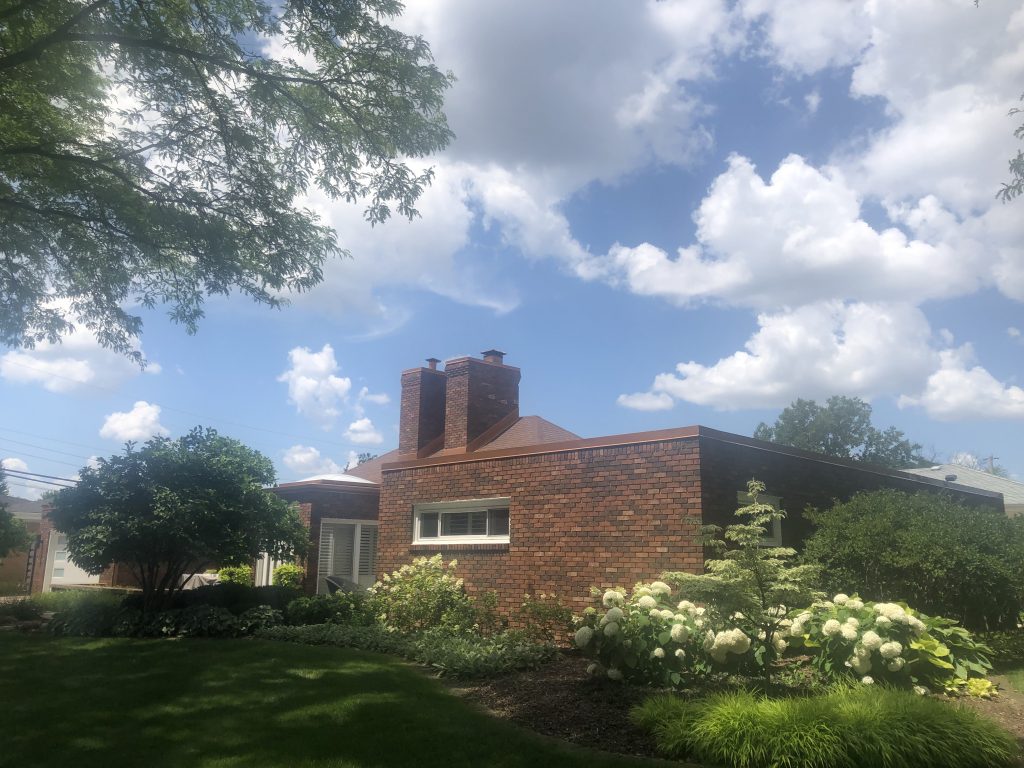
This is where our South Side tour begins. It will be open to the public.
Malcom Cairns, Professor Emeritus, Ball State University Landscape Architecture Department said, “Riverside is a great comparison. The village was designed by Olmsted in 1869, based on escaping the city by train to a suburb in the country. New York developers were behind it hoping to make a killing.”
Until the Chicago Fire of 1871.
“Rebuilding ate up all regional mortgage money and Riverside sat largely empty of houses until the turn of the 20th Century to meet current fashion and demand,” Cairns said. “Lots were split in half.”
Walter Baltis grew up at 18th and Blue Island in Chicago. His father was a cabinet maker. He had an eighth-grade education and obtained a chauffeur’s license in the 1920s. He also had a Studebaker dealership on Cermak Road in Cicero in the 1920s and became president of the Cermak Road Businessman’s Association. Baltis always thought that growth would move along 22nd Street West.
Baltis helped subdivide the land in Westchester and constructed many affordable homes for the post-war boom. By the late 1950s Atomic age “Baltis Built Homes” had constructed over 2,000 homes in Westchester. These homes remain affordable today and are not to be confused with the McMansions of Hinsdale, Naperville, etc.
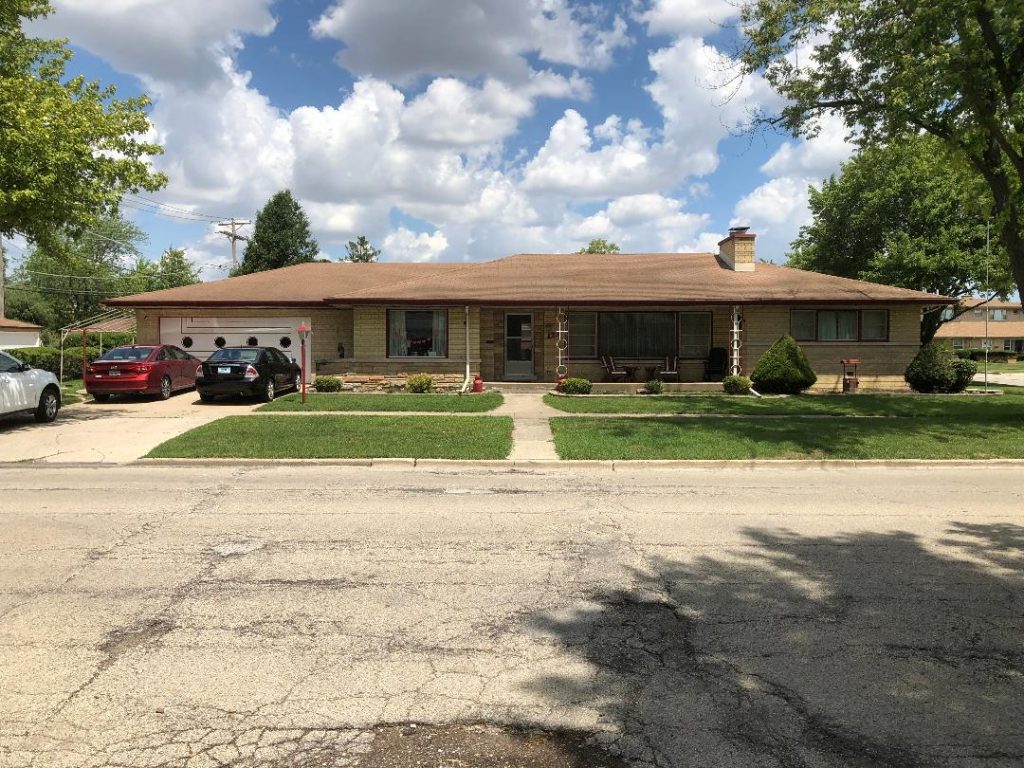
This is where our North Side tour begins. It is one of two homes that will be open to the public.
When Baltis started building in Westchester, the village was defined by virgin prairie and woodland. Westchester was designed in a grid of 42 miles of paved, lighted streets, 84 miles of sidewalks and the Chicago Rapid Transit Line, which stopped at Roosevelt Road, Canterbury Street and Mannheim Road, near Cermak. “Westchester was where everyone came to learn how to drive,” George Breneisen told the Chicago Tribune in May 1989. “With all those paved streets and no houses on many of them, it was ideal.”
Jim Suva is a long-time Westchester resident who lives in a pristine 1956 Baltis ranch in the Old Town (middle section) of the village. The New Town section is generally south of Cermak Avenue. He is the docent for our north-side tour.
The Suva family house is a rarity in town with its porthole windows in the garage. Atomic-era Sputnik lights hang from the ceiling as guests walk through the front door. The house has the original pink tiled bathroom with 1956 cabinets and shower doors that feature etched glass fish.
The Chicago architectural firm of John K. Neebe designed the house. Neebe was also architect for the William Faust single-family house (1910) at 2039 N. Humboldt Blvd. in Chicago as well as two-flats at 2117 and 2118 N. Humboldt Blvd. (1908), according to records from the Chicago Park Boulevard System Historic District.
“My house was being built in 1956,” Suva said. “My Mom was pregnant with me. My parents had been married for a year. I was born in July of ‘56. They chose this house. Several people were interested in it. In the 1950s there was a local singing group that wanted to buy the house. But the Suvas bought the house and we moved in December of 1956 and lived there until August 1965. Then the Lorenzo family bought the house.”
The Lorenzo family owned Lorenzo’s Frozen Foods (established 1936) at 9940 W. Roosevelt Rd. in Westchester. Suvas said, “They put in different doors and painted over the woodwork. We moved to 1947 Westchester Boulevard. We lived there until 1972. My Mom passed away in 1971. In 2004 Mrs. Lorenzo had to sell the house because she was getting older. She didn’t want to sell the house. She loved it. It was my grandmother’s favorite house as well as mine. When they sold the house I always said I was going to buy the house back. Everybody in my family thought I was crazy.
“So we toured the house and my wife said., ‘It’s going to look nothing like it was.’ But in reality, it was like going home again. Luckily my wife went along with me. If it wasn’t for her, I wouldn’t have been able to afford the house. One bathroom was pink and it’s still pretty much there. The basement rec room has all the original paneling that my Dad put up with my grandfather and great uncles—including a bar.
“We ripped out all the carpeting to the hardwood floors. In the 1950s everybody wanted carpeting, hardwood floors were no big deal. We had all the floors refinished. It was interesting Mrs. Lorenzo didn’t want to sell the house but once we walked through the house and she knew we wanted it she was perfectly fine. Some of the furniture was even left for us.
“It’s our home now.”
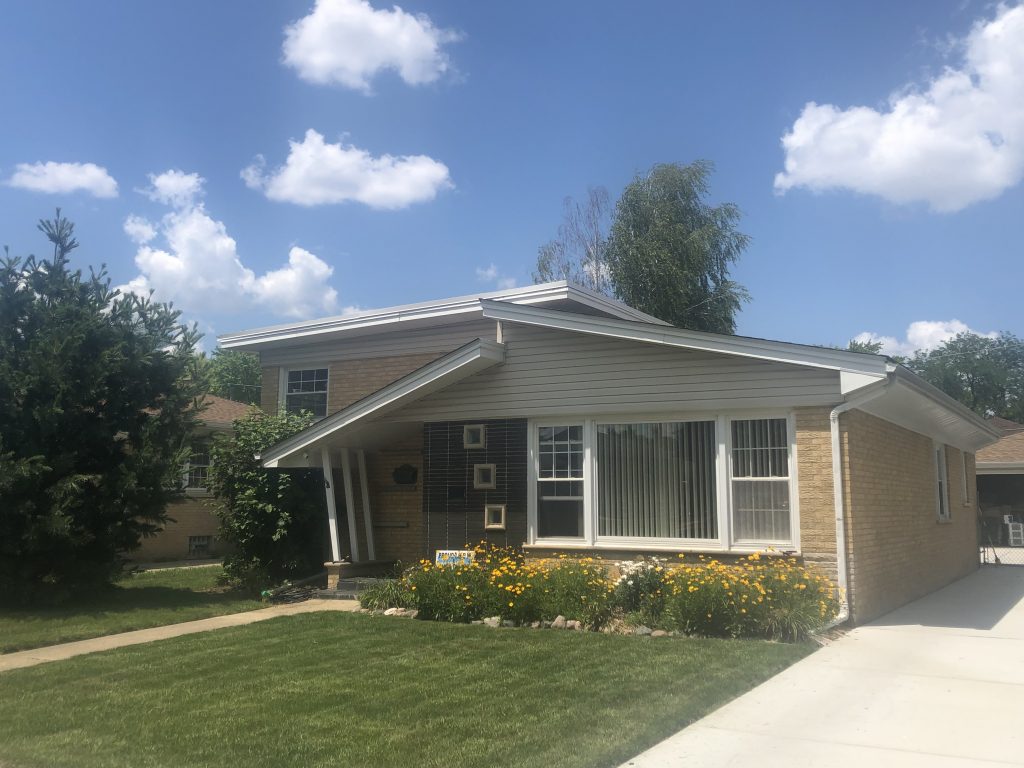
In 2006 Clare Cooper Marcus wrote the book, “House as a Mirror of Self.” Generations have searched for a comfortable place in their soul. What do people see in themselves when they buy a house?
“People are very attached to their homes,” Petrzilka explained. “This is the home I want.’ I discovered the architects who built our home (in Riverside) were the Von Gurten brothers. They also did the Tivoli Theater (1928) in Downers Grove. I couldn’t believe it when I found that out! Our house doesn’t look like anything from the outside. It had two bedrooms, and one bath. People love their homes. On tours people see you out there, they may come out and invite you in. That happened to us in Riverside. A guy invited us into his midcentury modern home. We got a tour of his garage.”
Westchester is prime real estate for homecomers or home starters.
As young Chicago area adults mature many people cannot afford to return to their roots in parts of the city or the suburbs. Neighborhoods have changed and become more expensive. The humble midcentury homes in Westchester make it possible to return or to start a new life. With that accessibility, the diverse fabric of the neighborhood flourishes.
And then, of course, every house has a living story.
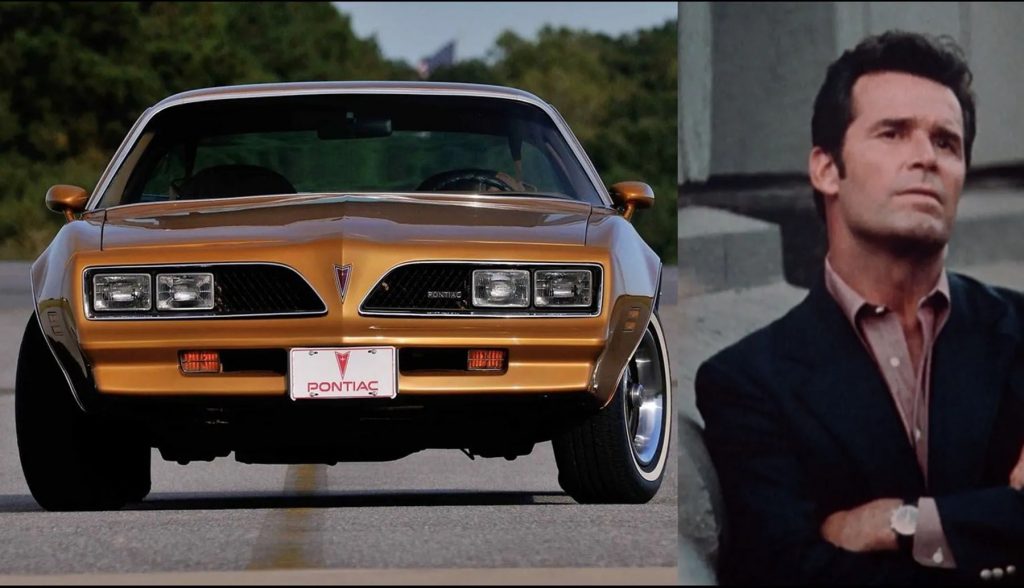
The late James Garner and his Pontiac.
Suva is also a member of the Cruisin’ Tigers GTO & All Pontiac Club, a Chicago area organization of vintage Pontiac car collectors. Suva owns a 1977 Firebird Esprit. In September 2010 he drove the car to Milwaukee to be featured in the “Crime Drama” episode of the “Pioneers of Television” PBS series. The ‘77 Firebird Esprit was the car the late James Garner used in the hit series “The Rockford Files.” Garner did his stunt driving.
Westchester has had its brush with celebrities.
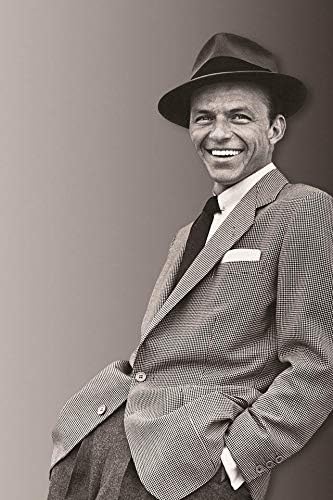
Old-timers say that Frank Sinatra once visited a piano-playing friend who recorded in his soundproof room in the basement of a house on Bristol Avenue.
Chicago Bears Hall of Fame linebacker Mike Singletary once lived on the west side of Westchester. “In the 1950s and 60s Westchester was mostly a white town,” one long-time resident said. (Singletary, who played for the Bears between 1981 and 1992 is Black.) When Blacks started moving in they passed an ordinance where they wouldn’t let you put a for sale sign in front of your house. You had to go to realtors to look at houses. In other words, you were not advertising to anybody who drove through the village. They were gatekeeping.”
In a May 16, 1959 advertisement in the Chicago Daily Tribune, Westchester’s Martindale Estates was selling 3-bedroom bi-levels for $29,900 as “A Better Way of Life.” Martindale Estates was developed by Chicago builder-architect Martin H. Braun. He promised that no two homes would be alike as face brick and wood trim color were planned to suit the building site. Martindale Estates ads of 1959 also promised “careful screening of purchasers.” The development was on Robinhood Avenue, south of Mayfair.
Westchester has changed with the times.
According to the Chicago Metropolitan Agency for Planning July 2022 Community Data Snapshot, Westchester (pop. 16,892) was 54.5 percent white, 21 percent Hispanic or Latino, 18 percent Black, 4.1 percent Asian, and 2.0 percent other.
“In the 1960s and 70s we had Chicago Blackhawks live here,” Suva said. “In the 1970s there was a Black backup fullback for the Bears who lived here. He wanted to watch all the games. He put up a big satellite dish and the Village of Westchester told him he had to take it down.”
The street on which I live is a beautiful melting pot. My neighbors are from Nigeria, Mexico, Melrose Park, and Pakistan. It is a more diverse block than where I lived for nearly 20 years in the Ukranian Village neighborhood of Chicago.
I see people of all ages and colors walking along the quiet sidewalks of my neighborhood. Tomorrow can be for everyone. Respect the walk. I’m excited about what our small midcentury homes can offer to all who visit Westchester. They are dreams you can build on.
Thank you to Anisa Peraica co-chair of the Citizens Advisory Board, for all the hard work. Also, thanks to CAB Mod Squad volunteers Michael Finelli, Lou Liotine, Maggie Ladas, Kevin Tallman, and our tour docents Anisa Peraica, Jim Suva, Larry Korbus, and Nicole Molinaro.
Thanks also to Sandy Sworsky, John Lorenzo, Linda Korbus, and Mary Finelli. Thanks to my friend Janet Hill for the logo design, Busy Beaver Button Co. in Chicago for the last-minute swag, Greg Gromek for graphic design assistance, and a hat tip to Lee Bey of the Chicago Sun-Times for the encouragement.
Our sponsors are Anna’s Place in Westchester, Coldwell Banker Stratford Place, Village of Westchester, Westchester Chamber of Commerce, and the Westchester Public Library. Thanks also to the Westchester Community Church.

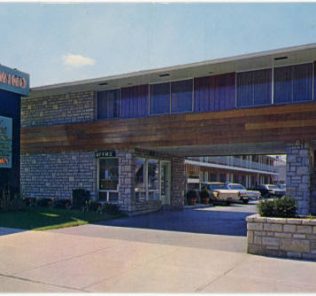


Hello Dave,
I enjoyed your article about Westchester’s mid-century modern homes. I live in Westchester and would like to find out the architect of my home. How would I go about finding that out? Does the village have that type of record anymore?
Thank you,
Michelle
Hi Michelle, that is a great idea. I wish we had a repository in Westchester for something like that.
E-mail me at Davehoekstra@att.net with some details and I shall see what I can do. Thanks. (We’re placing Modchester II on pause until late summer 2025.)